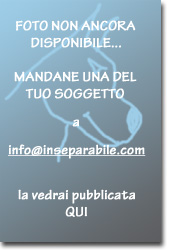Briquet griffon vendeen

We are collecting the material for being able to realize the card of Briquet griffon vendeen
FCI-Standard N° 19 / 18. 02. 2000 / GB
TRANSLATION : John Miller and Raymond Triquet.
ORIGIN : France.
DATE OF PUBLICATION OF THE ORIGINAL VALID STANDARD : 09.01.1999.
UTILIZATION : Scenthound for hunting with the gun of large game, and also of fox and hare, usually working in a small pack.
CLASSIFICATION F.C.I. : Group 6 Scenthounds and related breeds.
Section 1.2 Medium-sized Hounds.
With working trial.
BRIEF HISTORICAL SUMMARY : It is the only breed having kept this name « Briquet », which means « medium-sized dog ». Selection dates from before the first World War by the Comte d’Elva. It is a harmonious and improved reduction of the Grand Griffon Vendéen, distinguished, rather stocky in its construction. Decimated several times because of wars, the Briquet type reappeared in Fontenay le Comte (Vendée) in 1946. At present, one finds numerous subjects of quality; a team of Briquets won the trophy of France on roe deer in 1995 and numerous teams are unleashed on wild boar.
GENERAL APPEARANCE : Griffon of medium size, receptive and very determined. Rather stocky and well proportioned.
BEHAVIOUR / TEMPERAMENT :
Behaviour : Fine nose; fast dog with pleasant voice, does not refuse bramble; very nimble on rough terrain, hunts rather with nose to the wind.
Temperament : It takes a lot of initiative, has stamina and is robust. It must be equally good at working a cold track, at starting game and at driving it. The Briquet is a passionate hunter; it is up to his master to make im obey.
HEAD
CRANIAL REGION : Quite light, the lines of the skull and the muzzle should be parallel.
Skull : Slightly domed, rather short, not very broad.
Stop : Well defined.
SUGGESTED BREEDINGS by MENANDPETS.COM:
No breeding to signal
if you want to know like signaling yours, contacts: marketing@inseparabile.it
FACIAL REGION :
Nose : Strong, black, except for white and orange coats where a brown colour is tolerated; well open nostrils.
Lips : Not too developed, but covering well the lower jaw; covered with abundant moustaches.
Eyes : Dark, large and lively, the eyebrows well pronounced but not covering the eye. The conjunctiva must not be apparent.
Leathers : Supple, narrow and fine, covered with long hair, ending in a point, well turned inwards and not reaching the end of the muzzle, set low, below the level of the eye.
Muzzle : Straight, rather short, practically of equal length with that of the skull, not too broad at its extremity.
Jaws/Teeth : Scissor bite. Incisors set square to the jaws.
NECK : Long and elegant, without dewlap.
BODY :
Back : Solid and short, straight or very slightly rising.
Loin : Straight, muscled and well coupled.
Chest : Not too wide, quite deep, reaching the level of the elbow. Ribs : Moderately rounded.
Flank : Full. Underline very slightly raised towards the rear.
TAIL : Thick at the base, tapering progressively, set high, sabre carriage, but never as a sickle; rather short.
LIMBS
FOREQUARTERS : Quarters quite strong but without being heavy, vertical and parallel.
Shoulder : Long, clean and slanting.
Elbow: Low set and close to the body.
Forearm : Strong bone structure and straight.
HINDQUARTERS : Well developed, vertical and parallel.
Thigh : Long and muscled.
Hock-joint : Large and well let down. Seen from the back, never cow-hocked nor bandy-legged. Seen in profile, angle of hock moderate.
FEET : Not too strong, pads hard, the toes well arched and tight, nails solid. A good pigmentation of the pads and nails is desirable.
GAIT / MOVEMENT : Active and supple, not jerky nor bouncy.
SKIN : Rather a little thick but supple. Often marbled in the tricolour subjects. No dewlap.
COAT
HAIR : Long without exaggeration, sometimes bushy, harsh to the touch; undercoat well furnished; the belly and the inside of the thighs must not be bare; eyebrows well pronounced but not covering the eye.
COLOUR : Black with white spotting (white and black). Black with tan markings (black and tan). Black with light tan markings. Fawn with white spotting (white and orange). Fawn with black mantle and white spotting (tricolour). Fawn with black overlay. Pale fawn with black overlay and white spotting. Pale fawn with black overlay. Traditional names : hare colour, wolf colour, badger colour or wild boar colour.
SIZE:
Height at withers : Males from 50 cm to 55 cm.
Females from 48 cm to 53 cm.
With a tolerance of 1 cm more or less.
FAULTS : Any departure from the foregoing points should be considered a fault and the seriousness with which the fault should be regarded should be in exact proportion to its degree.
Head :
- Too strong, recalling that of the Grand Vendéen.
- Depigmentation of the nose, lips or eyelids.
- Muzzle too long.
- Pincer bite.
- Light eye.
- Leathers too long, flat, smooth haired and high set.
Body :
- Cylindrical or whippety.
- Back not firm enough.
- Slanting croup.
Tail :
- Too long or deviated.
Quarters :
- Insufficient bone.
- Angulation too straight.
- Slack in pasterns.
- Toes not tight enough.
Coat :
- Insufficiently dense, hair fine.
Behaviour :
- Timid subject.
DISQUALIFYING FAULTS :
- Fearful or aggressive subject.
- Lack of type.
- Prognathism (overshot or undershot mouth).
- Wall eye, eyes of different colours (Heterochromia).
- Lack of width in the sternal region.
- Ribs narrow towards the lower part.
- Kinky tail.
- Woolly coat.
- Self-coloured coat black or white.
- Important depigmentation.
- Size outside the standard.
- Noticeable invalidating fault.
- Anatomical malformation.
Any dog clearly showing physical or behavioural abnormalities shall be disqualified.
N.B. : Male animals should have two apparently normal testicles fully descended into the scrotum.